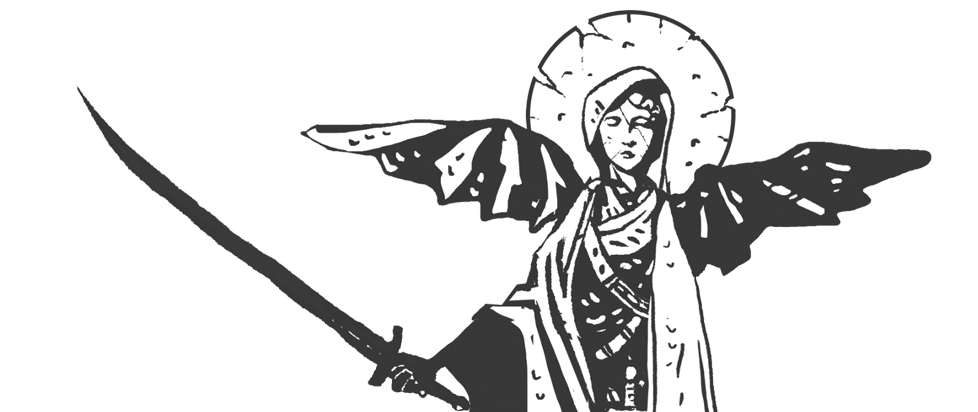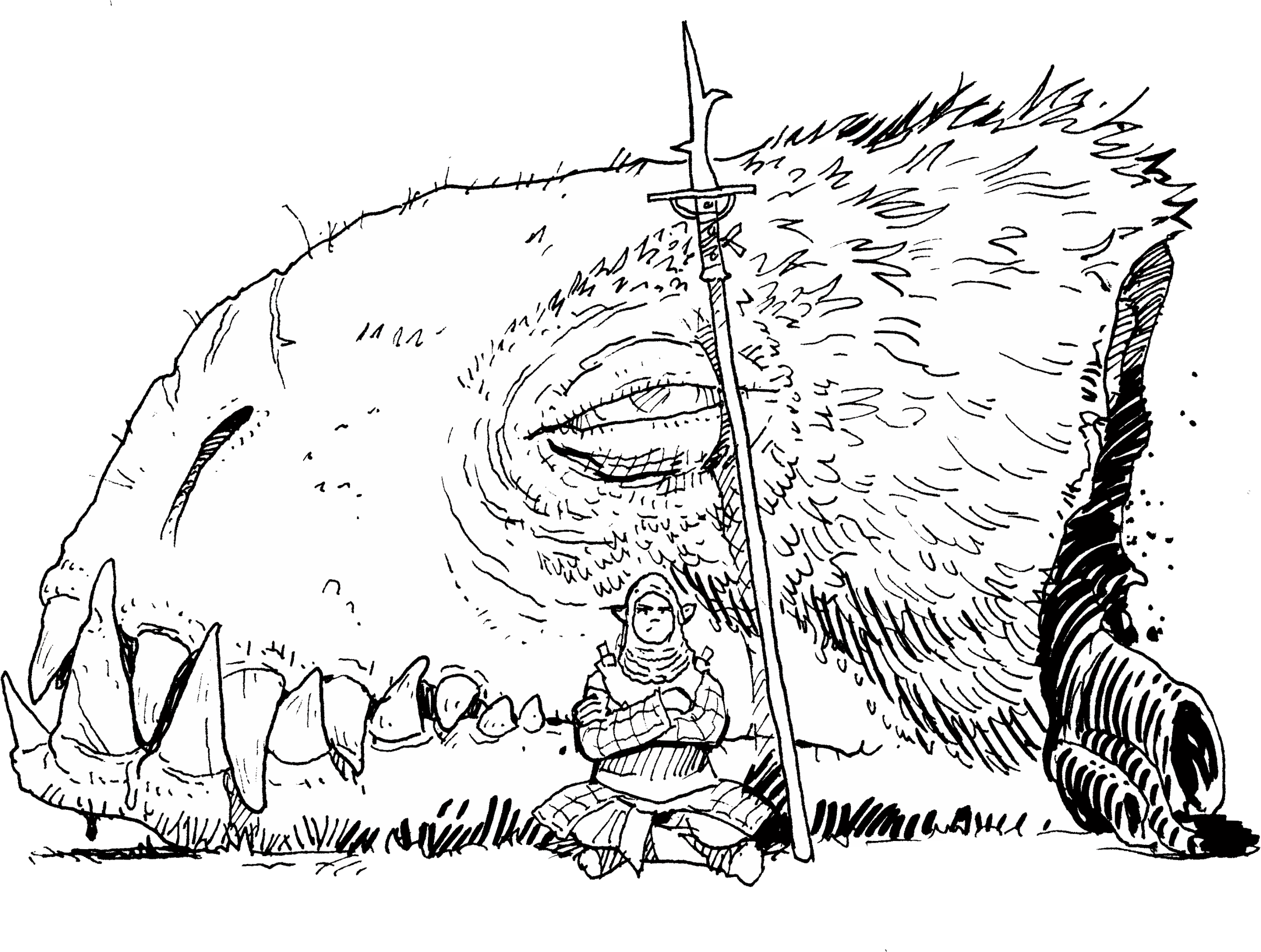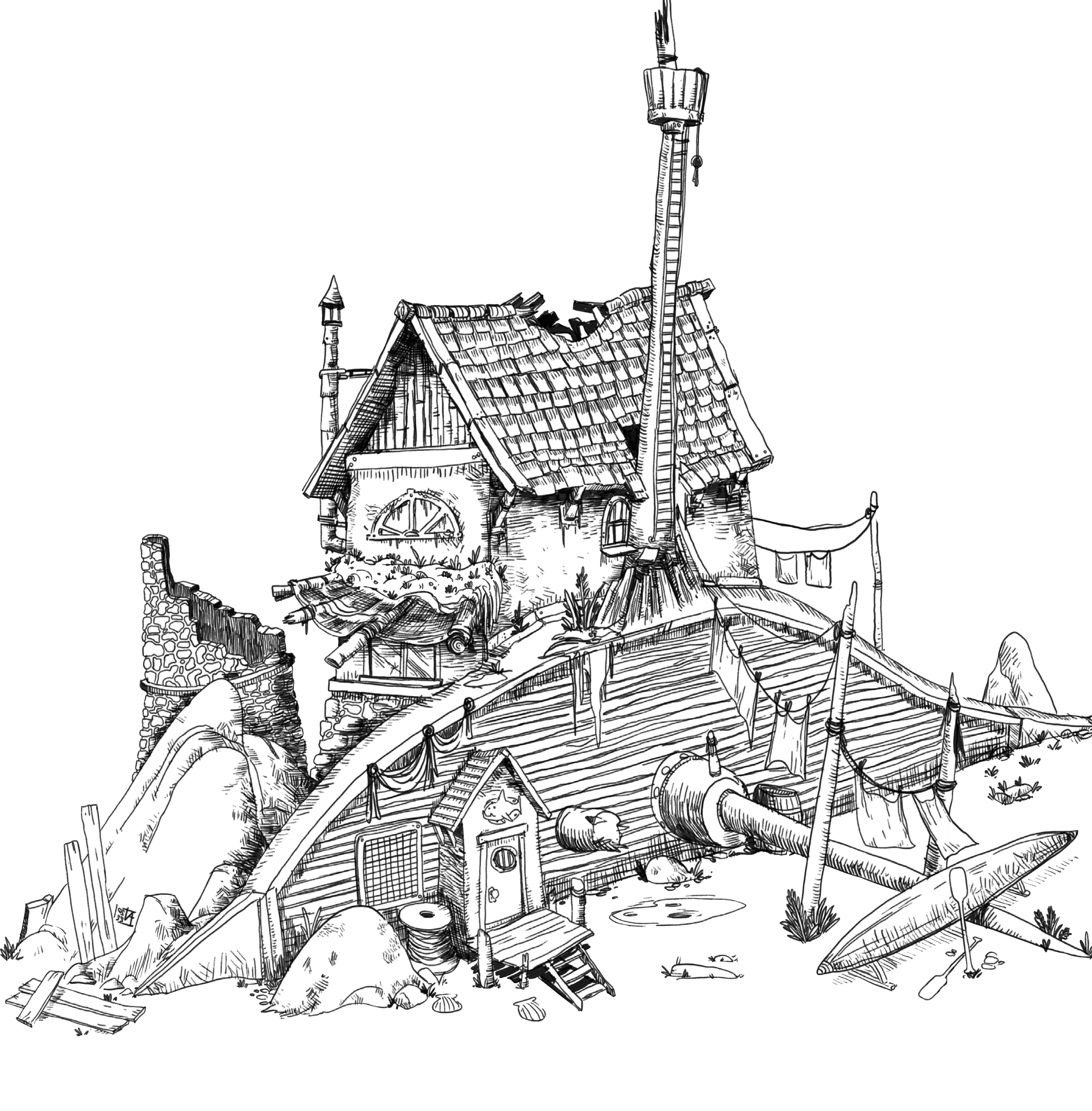
The Tower, The Fool, The Meatgrinder
This feature is a reprint from Unwinnable Monthly #174. If you like what you see, grab the magazine for less than ten dollars, or subscribe and get all future magazines for half price.
———
This series of articles is made possible through the generous sponsorship of Exalted Funeral. While Exalted Funeral puts us in touch with our subjects, they have no input or approval in the final story.

Ah, the 20-sided die, the D20, the randomizer of all things RPG. Where would we be without it?
Well, perhaps in a more productive world all things considered, or maybe we would still be drawn to the excitement of fantasy and roleplaying just like we are today, but with a slightly different method for randomization. In fact, in His Majesty the Worm, Josh McCrowell has attempted to do just that. Gone are the bags of dice, and instead players are encouraged to pick up a set of tarot cards – the minor arcana, to be specific – and use the swords, hearts, pentacles, wands and, of course, the Fool to determine their fate as they wind their way through the megadungeon and the city that stands above it.

The link between His Majesty the Worm and tarot starts with the name of the game: a reference to Italo Calvino’s book The Castles of Crossed Destinies, where a group of pilgrims suddenly become mute and tell their stories through a set of tarot cards. “An apt allusion,” as McCrowell put it, for a game that tells many stories through tarot. However, despite adding random chance to the game the tarot cards “do not have oracular properties in His Majesty the Worm. That is, there are no mechanics for using the normal methods of tarot symbolism and interpretation to generate scenarios.” Instead, McCrowell chose the cards as a randomizer because they are “informationally rich” and “gameable,” and tarot cards specifically because “they’re weirder than playing cards, they make the game feel more heavy metal and arcane, and they’re interesting to look at.”
With the tarot cards helping set the material stage, the game itself is arranged around four phases: crawl, challenge, city and camp. During the crawl phase, players pursue their chosen quest by exploring the megadungeon, complete with an awe-inspiring “meatgrinder” to test the limits of the players. Megadungeons appealed to McCrowell, not just because they are a “huge, multi-level space” where “you can go anywhere you want,” but also because they are a (sort of) unsolved problem in RPGs. For many gamers megadungeons sound good in theory and sort of fall apart in execution: [possibly] because the premise is so daunting for a GM.”
In order to help structure the megadungeon a bit, His Majesty the Worm employs the meatgrinder as a way to “deal with random encounters, wandering monsters, and time tracking . . . Every time the players move into a new room, the GM checks on the meatgrinder table to see what is currently happening there, and describes the environment based on a combination of the meatgrinder’s result and the contents of that room. It’s not a preplanned story.”
As such, the megadungeon crawl becomes unpredictable, unknowing and ultimately punishing. You’ll face your challenges down here too, where combat is based on the tarot and players’ attempts to outdo the GM’s machinations.

But, personally, I find the truly fascinating part of the game outside of the megadungeon. If you survive (and that’s a big if), the camp and city phases in His Majesty the Worm offer unique respite from the action. In the camp phase, you get to rest up and (among other actions like scout and eat) use your “bonds” with the other players to recover from your time in the underworld. McCrowell describes bonds as “the primary metacurrency of the game. When you roleplay a Bond with another character – Ally, Rival, Lover – you ‘charge’ your Bond with them. Then, when you rest, you spend those charges to heal.” As players develop bonds with their fellow travelers over time, it offers them a better opportunity to recover during the camp phase, and then prepare again for the wild, wooly underworld where they will inevitably travel.
Finally, players also get a chance to go to the City, where they can run their upkeep and perhaps actually succeed. As McCrowell puts it, “His Majesty the Worm is very focused on megadungeon-crawling, and I wanted players to have this sense that surviving the dangers means something. Or else why not take crazy, wild risks? I want to root for adventurers and hope they come home.” So, in the City it is possible to build your and your guild’s fame, pay your taxes, sell your treasure, or even beg and busk. Perhaps most intriguing to me though is the ability to retire your character.
“I think the arc of the game should be: Make a character. Love them. Maybe they survive. Maybe not. If they do, they get to retire to their perfect life (that you set up during City Phases) . . . You can be the mayor! You can open a brewery! You can open a shop selling ghost pumpkins! You can carve your dryad girlfriend into a figurehead for your pirate ship and become the scourge of the seventeen seas!”

The alluring prospect of being able to see my old characters succeed after they are out of my hands (rather than merely dying, which is the standard practice for me) is certainly an exciting element of the game. The city feels like it really adds something of value to all the grinding through mazes and sludge and death that pervade the underworld.
Those are the very basic elements of His Majesty the Worm, but given that it stands at over 400 pages, it’s clear that I won’t be able to cover all of the detailed aspects of the game that McCrowell has developed over the years. At this point, he has “run the same continuous megadungeon for seven years,” which is clearly shown in the detailed mechanics throughout the book. McCrowell also draws direct inspiration from comics for many of the features of the game.
“My main influences are Dungeon Meshi by Ryoko Kui (the most thoughtful treatment of the physicality of dungeoneering I’ve ever read), House of Orr (a defunct webcomic that shaped my thinking of ‘the party as a character’) and Rat Queens by Kurtis J. Wiebe and Roc Upchurch (whose friendship and interactions serve as inspiration for the inter-party relationships characters can have). Also things like the “Betty Climber” from Rat Queens or “Fastball Special” from X-men were inspirations for the game’s combat system.”

And the effect of this influence is clear throughout the game, including in the mechanics, but also through the art in the book. Funded through an ItchFund, McCrowell paid a variety of “artists, editors and layout gurus to help” with the book. He also used “art put into the creative commons (CC-BY) directly: Kim Holm for example.” McCrowell is a “big believer in the creative commons movement” and hopes that His Majesty the Worm “echoes some of their contributions back to them.” As a fellow traveler in the world of the creative commons, I applaud this movement and truly hope that the artists who are included get a chance to see how their work is being used by something other than AI!
With such a sprawling labyrinth to explore, I wondered if this is a place that could ever be totally plundered. But McCrowell isn’t interested in completionism or total RPG domination, and suggested that maybe, once you have retired your character after playing His Majesty the Worm for a few months, “why not try out another game entirely? There’s a ton out there!” Which is to say, if you’re getting tired of the ubiquity of D&D or the relentless march towards insanity in Call of Cthulhu, McCrowell’s megadungeon will always be there for you to dip in and out of.
* * *
His Majesty the Worm is now available from Exalted Funeral.
———
Noah Springer is a writer and editor based in St. Louis. You can follow him on Twitter @noahjspringer.




